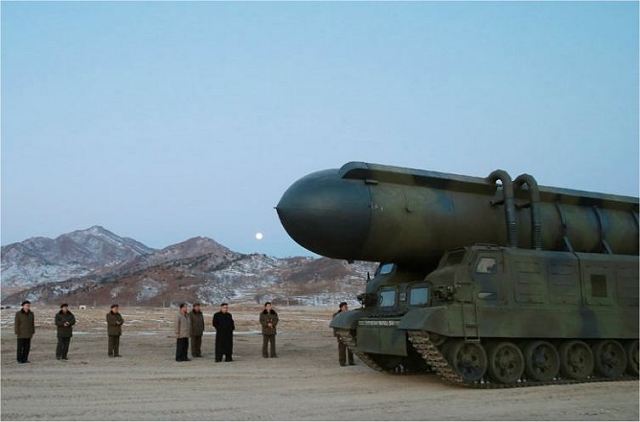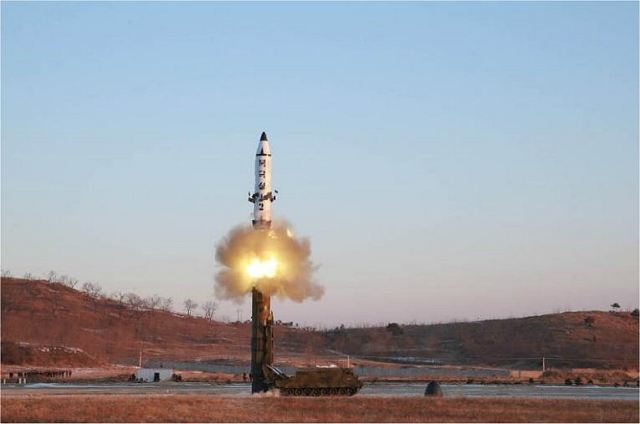Breaking news
North Korea has test-fired new Pukguksong-2 ballistic missile from armoured tracked chassis 11402171.
| 2017
|
|
|||
|
Defense & Security News - North Korea
|
|||
|
|
|||
|
North Korea has test-fired new Pukguksong-2 ballistic missile from armoured tracked chassis.
|
|||
|
Sunday, February 2017, North Korea has test-fired a new type of intermediate-range ballistic missile launched from a mobile launch unit using a tracked chassis, called Pukguksong-2 . According Pyongyang, this is a new solid fuel-powered intermediate-range ballistic missile able to carried a nuclear warhead.
|
|||
|
|
|||
 The Pukguksong-2 intermediate-range ballistic missile was launched from a new mobile armoured tracked chassis. The Pukguksong-2 intermediate-range ballistic missile was launched from a new mobile armoured tracked chassis. |
|||
|
|
|||
|
The missile was launched on Sunday, reaching a height of 550,000 m and range of 500 km before landing in the Sea of Japan without entering Japan waters.
According to military experts, a solid-fueled missile involves a much smaller fleet of support vehicles and can be prepared for launch much more quickly. In addition to quicker launches, solid-fuel engines boost the power of ballistic missiles, giving them greater range. The Pukguksong-2 was tested from a cold-launch canister system carried on a tracked Transporter Erector Launcher (TEL) vehicle, which would provide substantially greater cross-country mobility than the No-Dong’s wheeled TEL. South Korea’s military said Monday, February 13, 2017, that North Korea appears to have employed technologies used in submarine-launched ballistic missiles (SLBMs) to develop the new intermediate-range ballistic missile, Pukguksong-2 . According to our first analysis, the Pukguksong-2 ballistic missile is launched from a canister fitted at the rear of an armoured vehicle tracked chassis that seems to be based on a Soviet-made T-72 main battle tank but with eight road wheels on each side. There is a crew cabin at the front of the vehicle with two rectangular windows. All the launch and firing control operations could be performed by the crew from inside the vehicle. In firing position, the missile is erected in vertical position at the rear of the vehicle and two hydraulic jacks are lowered on the ground to stabilize the vehicle during firing of the missile. |
|||
|
|
|||
 |
|||



















